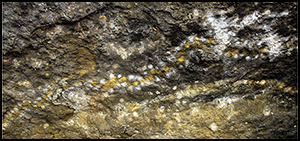Crossref Citations
This article has been cited by the following publications. This list is generated based on data provided by
Crossref.
Domingo, Inés
Smith, Claire
and
May, S.K.
1970.
Etnoarqueología y arte rupestre: potencial, perspectivas y ética.
Complutum,
Vol. 28,
Issue. 2,
p.
285.
Hayward, John A.
Johnston, Iain G.
May, Sally K.
and
Taçon, Paul S.C.
2018.
Memorialization and the Stencilled Rock Art of Mirarr Country, Northern Australia.
Cambridge Archaeological Journal,
Vol. 28,
Issue. 3,
p.
361.
Ebbs, Matthew R.
2018.
Encyclopedia of Global Archaeology.
p.
1.
Ebbs, Matthew R.
2018.
Encyclopedia of Global Archaeology.
p.
1.
Ebbs, Matthew R.
2020.
Encyclopedia of Global Archaeology.
p.
6655.
Domingo, Inés
Smith, Claire
Jackson, Gary
and
Roman, Didac
2020.
Hidden Sites, Hidden Images, Hidden Meanings: Does the Location and Visibility of Motifsand Sites Correlate to Restricted or Open Access?.
Journal of Archaeological Method and Theory,
Vol. 27,
Issue. 3,
p.
699.
Smith, Claire
Jackson, Gary
Ralph, Jordan
Brown, Nell
and
Rankin, Guy
2021.
An engaged archaeology field school with a remote aboriginal community: Successes, failures, and challenges.
Journal of Community Archaeology & Heritage,
Vol. 8,
Issue. 2,
p.
105.
Kelly, Madeleine A.
2021.
Resistance and remembering through rock art: Contact‐period rock art in Wardaman country, Northern Australia.
Archaeology in Oceania,
Vol. 56,
Issue. 3,
p.
173.
Lenssen-Erz, Tilman
Pastoors, Andreas
Uthmeier, Thorsten
Ciqae, Tsamgao
Kxunta, /Ui
Thao, Thui
and
Petraglia, Michael D.
2023.
Animal tracks and human footprints in prehistoric hunter-gatherer rock art of the Doro! nawas mountains (Namibia), analysed by present-day indigenous tracking experts.
PLOS ONE,
Vol. 18,
Issue. 9,
p.
e0289560.
2024.
Aboriginal Art and the Telling of History.
p.
103.
May, Sally K.
Lee, Jeffrey
and
Goldhahn, Joakim
2025.
Contact Rock Art: A Biographical Perspective from Western Arnhem Land, Australia.
International Journal of Historical Archaeology,
